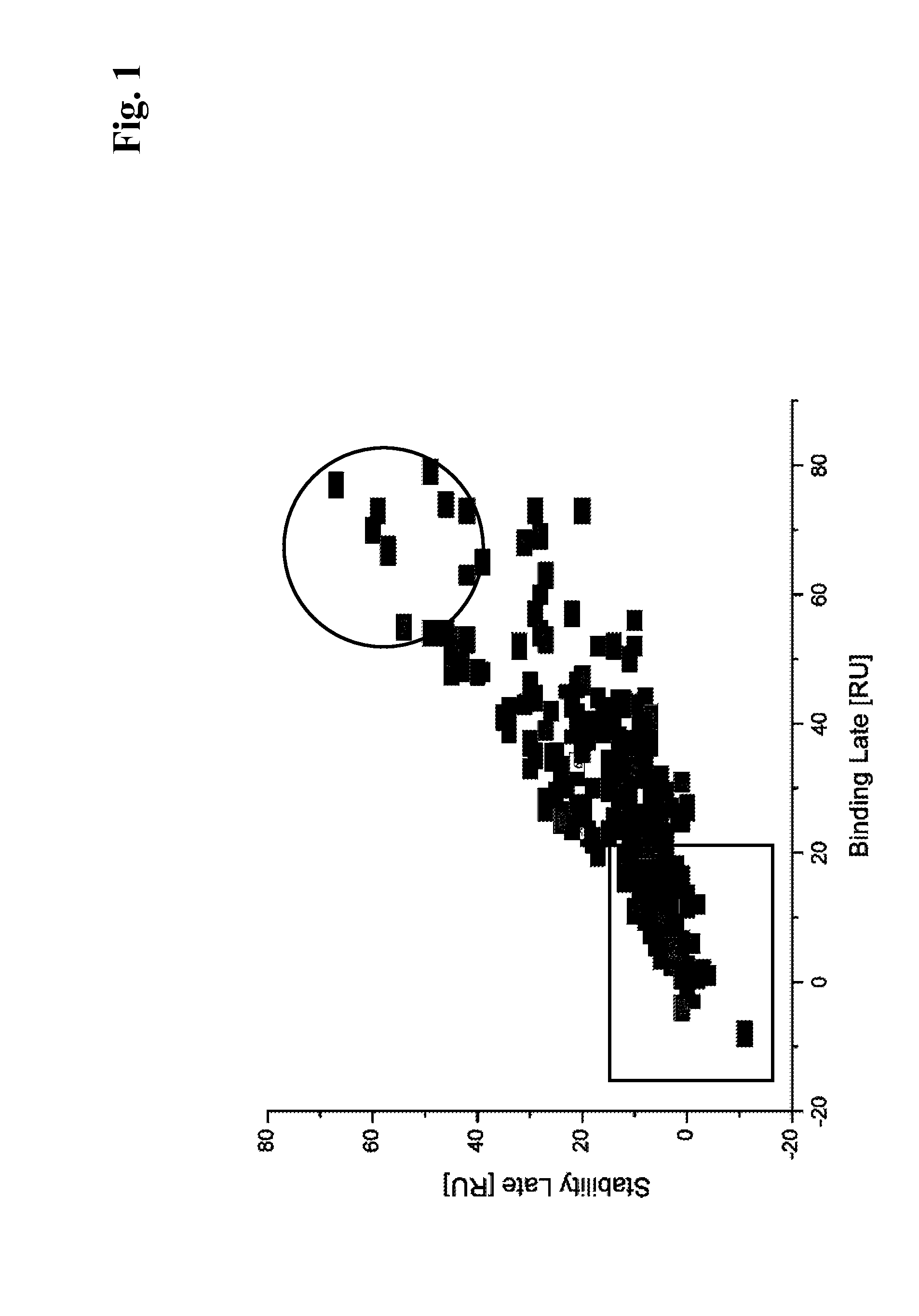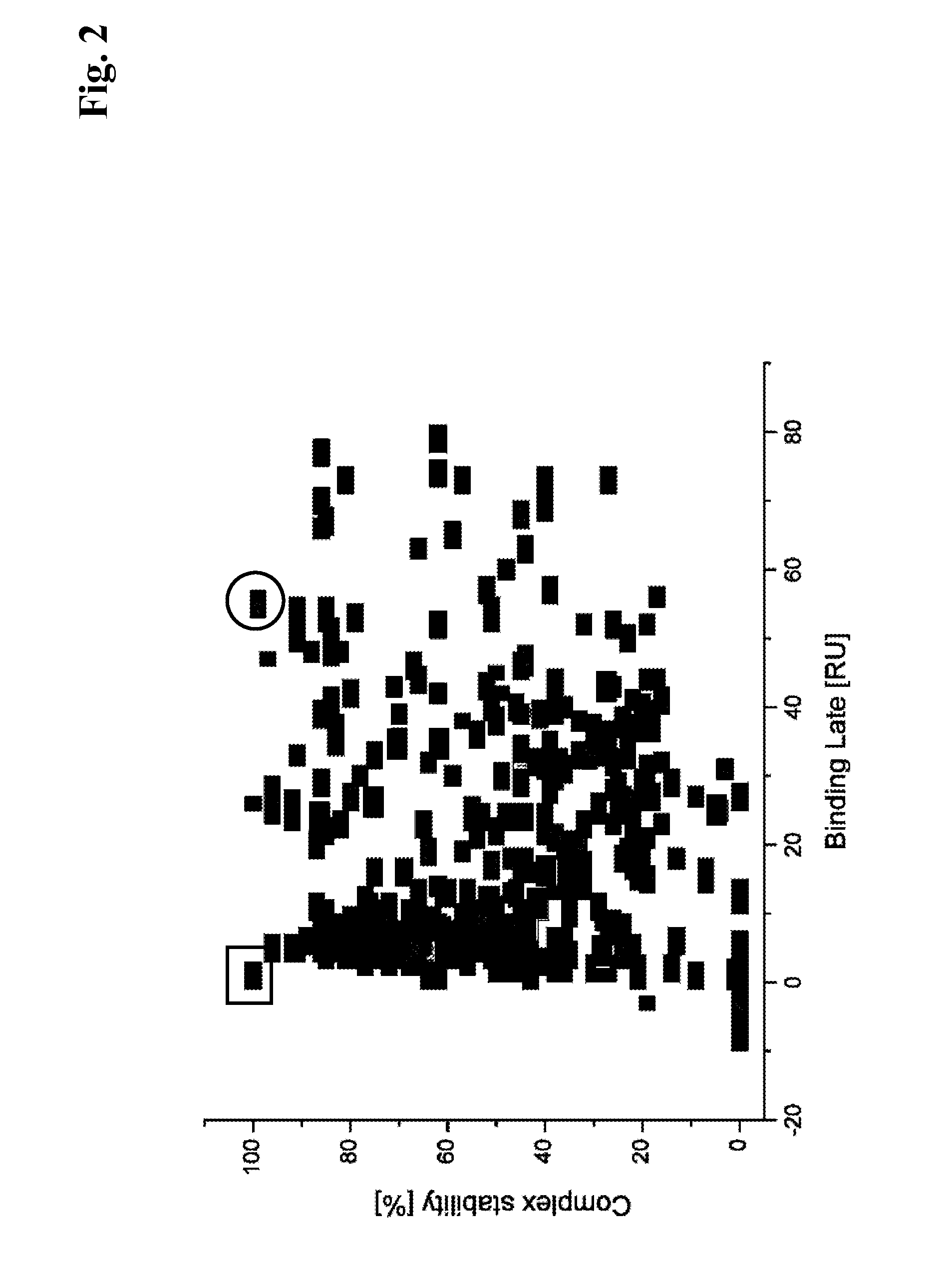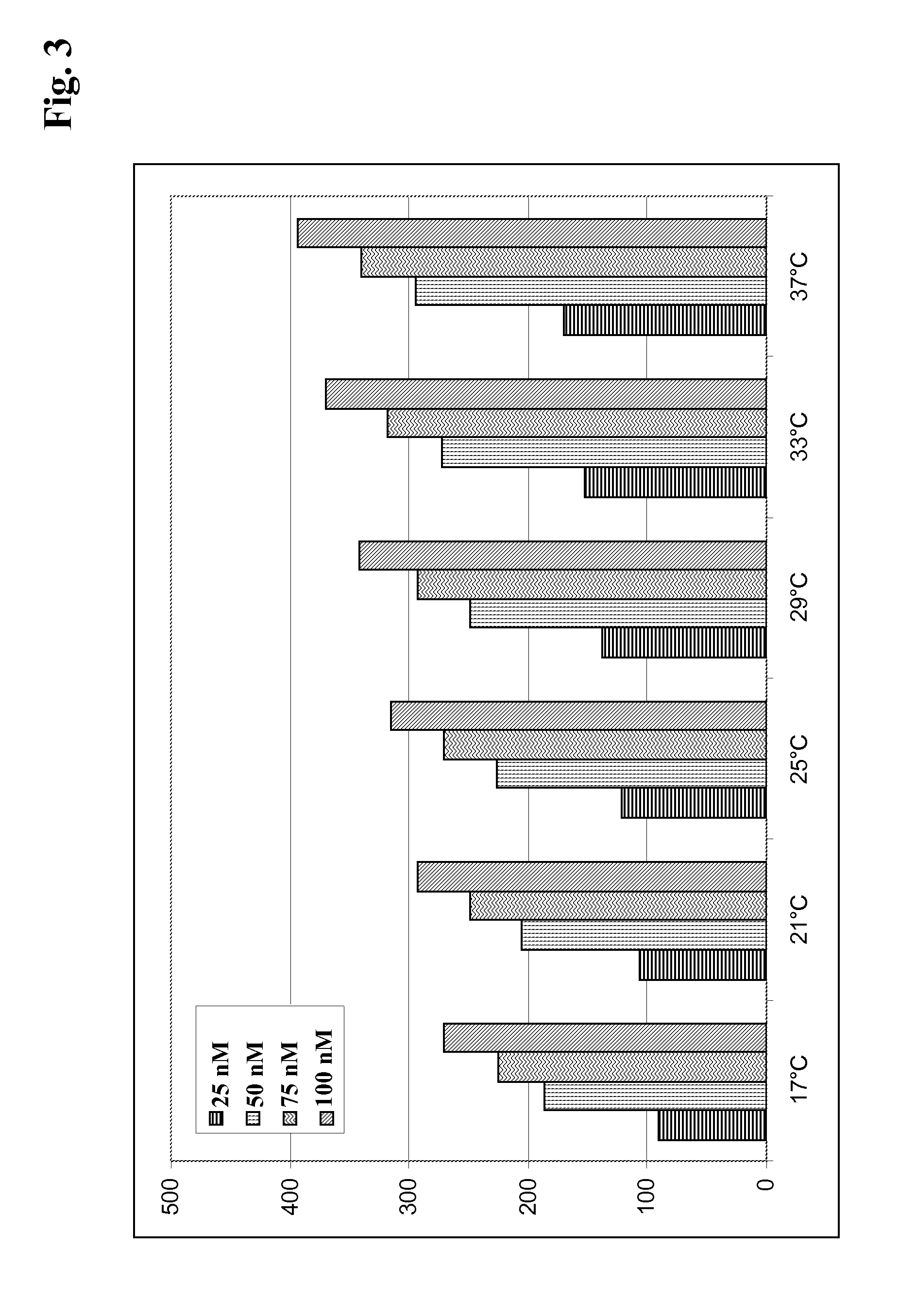Velocity factor
a velocity factor and velocity-based technology, applied in the field of velocity factor, can solve the problems of high sample purity and inability to tolerate reaction calorimetry
- Summary
- Abstract
- Description
- Claims
- Application Information
AI Technical Summary
Benefits of technology
Problems solved by technology
Method used
Image
Examples
example 1
Immunization of Mice
[0142]Balb / c mice 8-12 weeks old were subjected to intraperitoneal immunization with 100 μg of the antigen formulated as a KLH (keyhole limpet haemocyanine) fusion in complete Freud's adjuvant.
[0143]The immunization was performed 4 times: initial boost, 6 weeks, 10 weeks and 14 weeks after the initial boost. The second and third immunization was done using incomplete Freud's adjuvant. The final boost was done i.V. using 100 μg antigen three days before the hybridoma fusion took place. The production of hybridoma primary cultures was done according to Köhler and Milstein (Kohler, G., et al., Nature 256 (1975) 495-497). The hybridomas were isolated in 96-well micro titer plates (MTPs) by limited dilution and were screened for antigen binding by ELISA methods according to the manufacturer's manual. Primary hybridoma cell cultures, which showed a positive color formation upon antigen binding in ELISA, were transferred into the kinetic screening process.
example 2
Preparation of the CM5 Sensor Chip
[0144]The BIAcore A100 system under the control of the Software V.1.1 was prepared like follows: A BIAcore CM5 sensor (series S) was mounted into the system and was hydrodynamically addressed according to the manufacturer's recommendations.
[0145]In case of analyzing a murine antibody, the polyclonal rabbit anti-IgG antibody R (Jackson ImmunoResearch Laboratories Inc.) was immobilized on the flow cells via EDC / NHS chemistry according to the manufacturer's instructions.
[0146]In case of using human chimeric or fully humanized antibodies, the polyclonal goat antibody pAbG-IgG(IS) (Jackson ImmunoResearch Laboratories Inc.) was immobilized on all flow cells via EDC / NHS chemistry according to the manufacturer's instructions.
[0147]In case of using murine IgG Fab or Fab′2 fragments, the polyclonal goat antibody G-IgG(IS) (Bethyl L. Cat. No. A90-100A-5 v.9.8.2000) was immobilized on all flow cells via EDC / NHS chemistry according to the manufacturer's instruct...
example 3
Kinetic Screening of Primary Hybridoma Culture Supernatants
[0149]Hybridoma culture supernatants from different immunization campaigns conducted according to Example 1 were processed as outlined below.
[0150]The spots 2 and 4 of a sensor chip obtained according to Example 2 were used as a reference (1-2, 5-4). In order to capture antibody on the sensor surface hybridoma culture supernatants were diluted 1:5 with running buffer HBS-EP (10 mM HEPES pH 7.4, 150 mM NaCl, 1 mM EDTA, 0.05% P20, BIAcore) and were injected at 30 μl / min. for 1 min. Subsequently, the respective antigen was injected at 30 μl / min. for 2 to 3 min. association time. The dissociation phase was monitored for 5 to 15 min. Finally the surface was regenerated with a 2 min. injection of 100 mM phosphoric acid.
[0151]The sensor was preconditioned by repeated cycles of antibody capturing and regeneration.
[0152]For the selection of primary hybridomas the following procedure was used: A Binding Late (BL) reference point was s...
PUM
| Property | Measurement | Unit |
|---|---|---|
| concentration | aaaaa | aaaaa |
| temperature | aaaaa | aaaaa |
| temperature | aaaaa | aaaaa |
Abstract
Description
Claims
Application Information
 Login to View More
Login to View More - R&D
- Intellectual Property
- Life Sciences
- Materials
- Tech Scout
- Unparalleled Data Quality
- Higher Quality Content
- 60% Fewer Hallucinations
Browse by: Latest US Patents, China's latest patents, Technical Efficacy Thesaurus, Application Domain, Technology Topic, Popular Technical Reports.
© 2025 PatSnap. All rights reserved.Legal|Privacy policy|Modern Slavery Act Transparency Statement|Sitemap|About US| Contact US: help@patsnap.com



